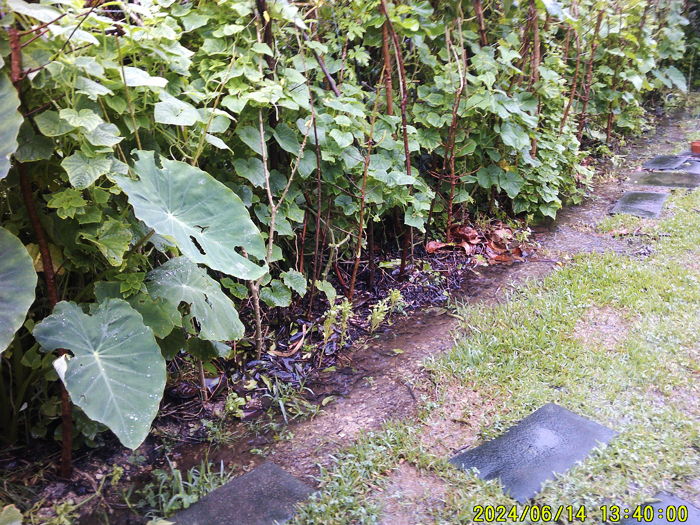
Photo 1
The 2024 rainy season in Okinawa ended on June 20. This was the summer solstice, the longest day of the year, with intense sunshine, and the temperature reached 33-34℃. The difference in the amount of rain and sunshine before and after the rainy season was unexpectedly large, and cucumbers, which had been so vigorous, suffered severe damage from the extremely high temperatures.

The few plants that did survive were unable to produce any female flowers and became covered with vines due to the long days and high temperatures (Photo1).
For better or for worse, in continuous cultivation if the situation deteriorates, the next crop can be planted, so I pulled out the withered plants and replanted some cheap, commercially available cucumber seedlings (50 yen) on June 25.
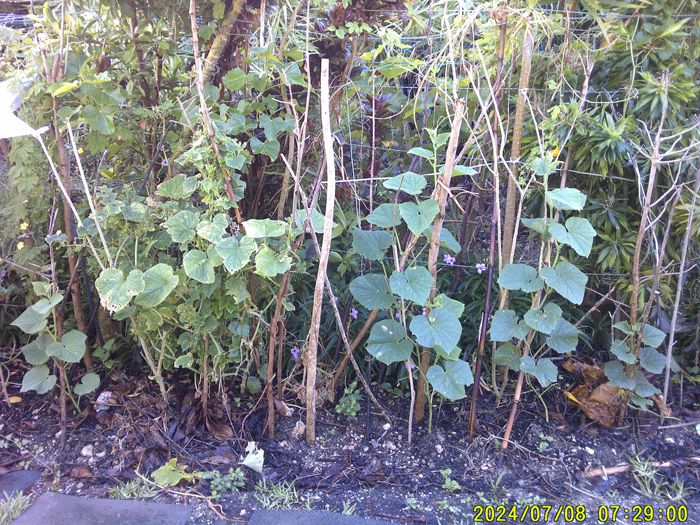
Photo 2
Photo 2 shows conditions on July 8, with side branches beginning to grow. If this situation continues, I expect to harvest them in mid-July, and I plan to continue throughout August, then move on to planting tomatoes in early September. Normally, high temperatures would cause damage, but the continuous application of organic matter using EM and EM Gravitron charcoal is clearly producing a layering effect, and strong light and high temperatures are being transformed into limit-breaking growth.
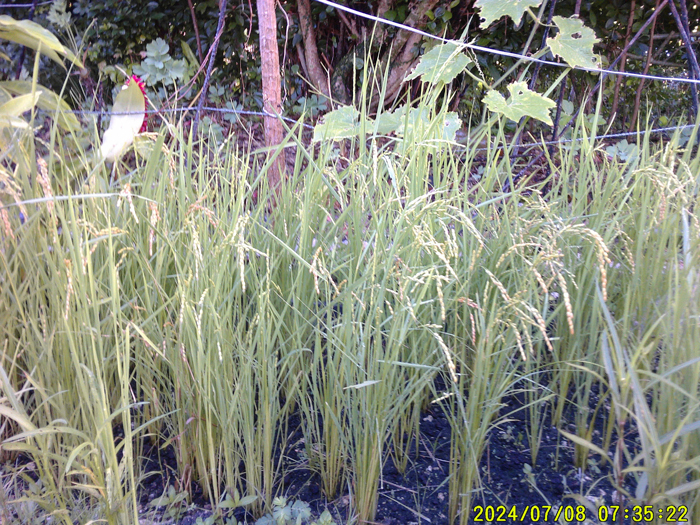
Photo 3
Starting this year (2024), I’ve been working on self-sufficient rice cultivation that will yield a harvest all year round. At the end of the year, I applied 200 kg of salt and 50 kg of EM Bokashi per 10 ares on the dry rice field, and after a week, I filled the field with shallow water, weeding and improving the soil, and directly sowed germinated rice on January 20. The rice steadily grew from around mid-February, and the first harvest was offered on the 1st of July (Photo 3).
Whenever the rice seems to be losing its vigor, I apply 50 kg of EM Bokashi and 200 liters of activated EM per 10 ares, and then continue the same procedure once a month. I lightly water the soil once a day. I sowed rice directly in the empty spaces, and when the ears appeared and ripened, I carefully harvested them one by one from the base of the plant. This method is potentially the best self-sufficient rice cultivation method, as it allows for permanent rice cultivation using nothing more than a pair of scissors.
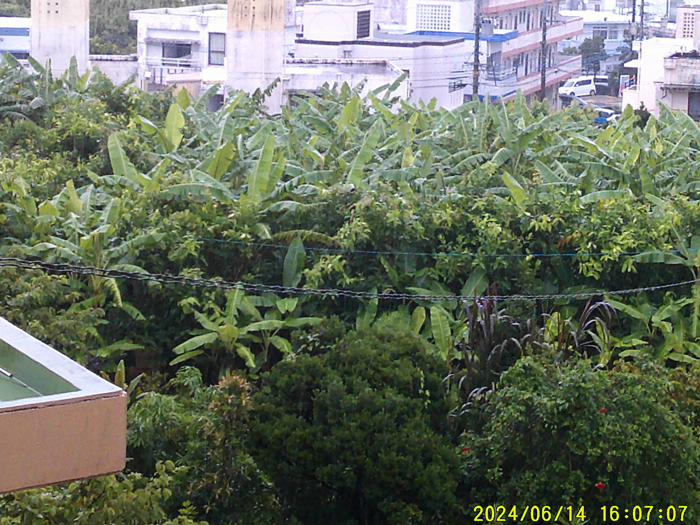
Photo 4
The banana fields have now become as overgrown as a jungle (Photo 4), showing the full effect of the salt fertilizer. Usually, the first typhoon approaches in late June or early July, but this year there has been no typhoon yet, with a few showers after Tanabata, the Star Festival held on July 7.
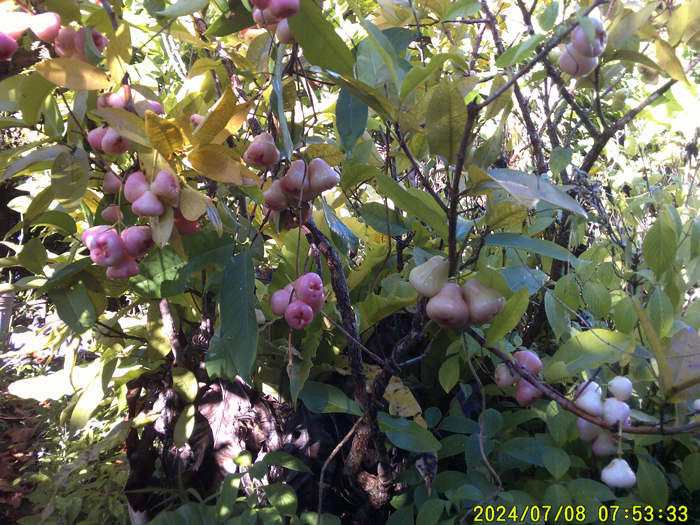
Photo 5
Most of the wax apple tree branches were broken off and removed in a typhoon in late August last year (2023), but the remaining branches are now producing unusually sweet fruit (Photo 5).
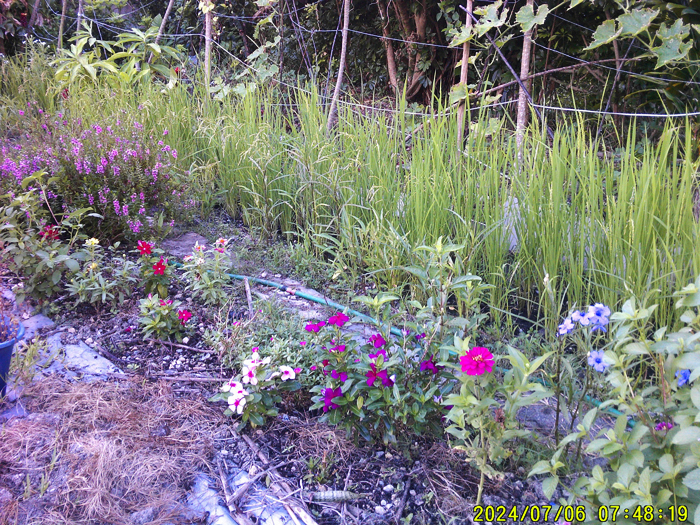
Photo 6
This former parking lot, which started out as a rocky bedrock, is now starting to transform into beautiful flower beds (Photo 6).
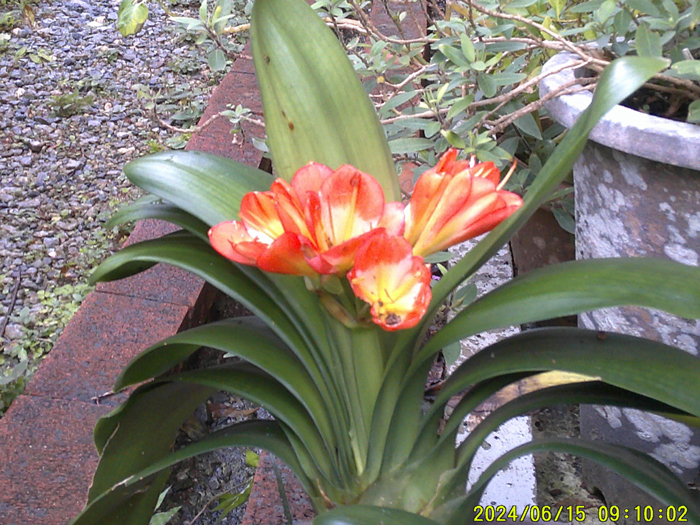
Photo 7
Photo 7 shows a Kunshilan, Kaffir lily that had been infected with a virus. For many years the flower stalk did not grow, and the flowers remained buried in the leaves. However, just like the papaya, the virus disappeared at some point and the plant is now producing normal flowers.
Read the original Japanese message at the link below.
2024.8.1 Updated.